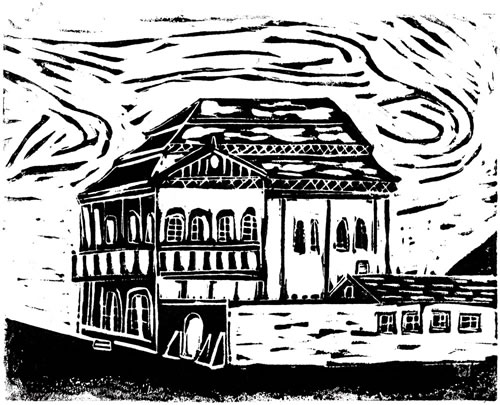Lost Treasures: The Wooden Synagogues of Eastern Europe The Artwork of Bill Farran
Końskie, Poland - Original Linocut
Końskie, Poland - Original Linocut
Yiddish name: Kinsk; Russian name: Koinsk
Końskie was founded as a town in 1748. Jewish residents began to settle there before that time, as the first written mention of Jews dates to 1588. By the second half of the 18th century, attesting to the community's growth, one of Poland’s first large synagogues was erected in 1780 at the invitation of King John III Sobieski. By this time, the Końskie community had its own cemetery, Hevra Kadisha (group of volunteers on call to prepare a deceased person for burial according to Jewish traditions), as well as other communal institutions.
The Końskie synagogue was a large, wooden structure noted for its architectural style, and is classified as one of the most unique examples of wooden synagogue architecture in Poland. Equally impressive was the synagogue’s interior, with a stunning bimah located in the center of the building.
The Końskie Jewish community enjoyed its magnificent synagogue until the outbreak of World War II. On the evening of September 11, 1939, the synagogue was burned to the ground by the German occupying authorities soon after their conquest of the town.
Purchase a print
Original linocut prints are 8x10 inches, and are available either unmatted or in an 11x14 matte.
I also offer matted 5x7 digital prints. These prints are created from high-res digital images and come in an 8x10 matte.
